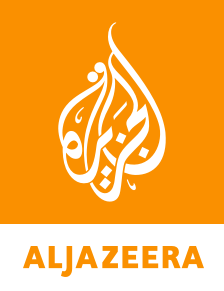New York City, the US: Swinging around a tree mimicking the signature open-arm lean of Bollywood star Shah Rukh Khan, Zohran Mamdani asks, “Hey! Have you ever voted before?” An enthusiastic group of Hindi/Urdu-speaking New Yorkers respond: “Yes!”
In the June 4 video posted on X, the 33-year-old Democratic Socialist member of the New York State Assembly then explains ranked choice voting using mango lassi, a yoghurt-based drink from the Punjab region of India, amid clips from popular Bollywood films and scores.
This is just one example of the kinds of videos populating Mamdani’s social media leading up to his 56 percent win in the New York City mayoral Democratic primary on July 1.
Mamdani was relatively unknown before the primary election, polling as low as one percent in an Emerson College survey in February 2025. But his grassroots campaign mobilised a multicultural coalition of voters, in part, by speaking directly to them — in their native tongue.
The government of New York state estimates that New Yorkers speak more than 800 languages, and as many as 2.5 million struggle with communicating in English. Experts, however, say Mamdani successfully used his skills in multiple languages to appeal to voters who often are not targeted by mainstream election campaigns, highlighting policy proposals targeting voters’ biggest concerns, like affordability.
Moments after ranked-choice voting totals were finalised, Mamdani’s team posted a campaign message garnering more than 5.7 million views on X alone, explaining a five-point breakdown of “What We Won on Election Day”: Trump voters, Adams voters, new voters, coalitions and turnout.
“Most campaigns focus on ‘triple primes’ – New Yorkers who voted in the last three primaries,” said Mamdani. “But this strategy ignored most of our city. We knew we could turn them out if they saw themselves in our policies.”
Speaking between clips of himself using Hindi, Urdu and Spanish, Mamdani explained, “We ran a campaign that tried to talk to every New Yorker, whether I could speak their language or simply tried. And the coalition that came out on Tuesday reflected the mosaic of these five boroughs.”
Among the areas Mamdani won by large margins were South Asian neighbourhoods such as City Line, Ozone Park and Jamaica Hills; Latino neighbourhoods including Corona, Washington Heights, Pelham Bay and Woodhaven; and Chinese communities in Flushing, Chinatown and Bensonhurst.
A Ugandan-born South Asian Muslim immigrant himself, Mamdani speaks both Hindi and Urdu – a fluency that allowed him to extend his reach to voters through social media videos.
Soniya Munshi, associate professor in urban studies and adviser to Asian-American community studies at Queens College, told Al Jazeera that these types of videos worked as conversation starters through Bollywood references that span the decades – from the 1970s onwards – recognisable to many South Asian diasporas of different ages and with different pathways to the US.
“I saw his Hindi/Urdu video move from Instagram to text chats among second-generation South Asians to WhatsApp family threads to discussions about Zohran’s platform for an affordable NYC,” said Munshi, who herself is a second-generation South Asian New Yorker. “These videos opened up a bigger conversation with friends, families and communities about our experiences, our conditions, our own hopes for the city we call home, and they also moved voters to come out for Mamdani.”
Cultural references and direct messaging
More than half of New York City’s South Asian population is of Indian descent, but Bangladeshi and Pakistani communities have seen the most growth over the past two decades. South Asians now make up 22.5 percent of the city’s Asian population, most of them immigrants. Mamdani’s campaign materials – in Hindi, Urdu, Arabic, Bengali and other languages – spoke directly to immigrant New Yorkers about the material issues affecting their lives.
“It’s critical to note the significance of Mamdani’s videos in Hindi/Urdu and Bangla,” said Munshi. “These two communities are among those with the highest levels of limited English proficiency households, essential workers, and poverty rates of all immigrant groups in NYC … Ultimately, what made these South Asian language videos so powerful was the culturally relevant references combined with the direct message of his vision and platform.”
Chowdury Md Moshin, 68, a native of Bangladesh who now lives in Jackson Heights, sat in Travers Park on a warm late June day reading a newspaper, his stark white hair and shirt contrasting with the bright green of the swaying trees around him.
A speaker of Bengali or Bangla himself, Moshin appreciated hearing from a mayoral candidate speaking a language he understands.
“I think he will be a good mayor and will make New York City cleaner,” said Moshin. “I love him.”
In one of the videos posted during the final push before the Democratic primary election, Mamdani demonstrated ranked-choice voting with Council Member Shahana Hanif’s 39th New York City Council District, using a plate of mishti doi, a sweet yoghurt dessert from the Bengal region of the Indian subcontinent.
“His Bangla-language video with Shahana Hanif, the first Bangladeshi Muslim woman to serve as city councilperson in NYC, was also significant,” said Munshi. “Bangla is not a South Asian language Mamdani is fluent in, and we see him making a good effort to speak with Hanif about the election.”
The digital agency behind this content, as well as Mamdani’s first viral video with over 3.5 million views on X, is called Melted Solids. The Brooklyn-based collective, founded in 2019 by Anthony DiMieri and Debbie Saslaw, has worked with Mamdani on various campaigns since as early as 2021.
In an interview with Adweek, Saslaw spoke to the 2025 primary, saying, “I’m [a] marketer and storyteller, and what I thought was necessary and needed in the political space was the ability to speak to regular New Yorkers, like using advertising … as a vessel to hear their concerns.”
Mara Einstein, digital marketing critic and author of Hoodwinked: How Marketers Use the Same Tactics as Cults, told Al Jazeera that, “They [Melted Solids] know him, which is why they could produce content that conveyed his specific voice.”
“They are also not a traditional agency,” added Einstein. “What Melted Solids did that was different is get rid of the red, white, and blue colour scheme that has dominated political campaigns. Purple and yellow/gold [colours used by Mamdani’s campaign for flyers, signs and branding] is striking and unexpected. The typography harkens back to grocery store signs, giving it a neighbourhood-y, everyman feel.”
 Democrat mayoral candidate Zohran Mamdani’s digital marketing agency used purple and gold to brand his campaign, breaking away from traditional red and blue colours [File: Richard Drew/AP]
Democrat mayoral candidate Zohran Mamdani’s digital marketing agency used purple and gold to brand his campaign, breaking away from traditional red and blue colours [File: Richard Drew/AP]‘I like how he talks’
For a campaign run on affordability and reaching every New Yorker, this analysis bodes well. But ultimately, experts say that Mamdani’s social media engagement performed well because his vision and platform were at the core of all of his content.
“The social media content was delightful to watch, well-produced, and engaging, but what was most important was that it had substance,” said Munshi. “It gave us something to talk about that was bigger than Mamdani as an individual or even his campaign. It activated something at a collective level.”
Outside the polls in Woodside on election day, Munshi asked an older Spanish-speaking Latina woman whom she planned to vote for. The woman reached into her purse, pulled out a worn Working Families Party flyer, and pointed to Mamdani’s face. “Him,” she said. “I like how he talks.”
“To me, this indicated that Mamdani’s communication wasn’t just about the language he is speaking in,” said Munshi. “But how he used language – clear, simple, focused, relatable to New Yorkers who are concerned with their everyday needs in this city.”
With five months until the general election, Mamdani and Melted Solids still have work to do as they face off against incumbent Mayor Eric Adams, who is backed by US President Donald Trump.
But if former New York State Governor Andrew Cuomo’s failed 2025 mayoral bid – backed by $25m raised by the super PAC Fix the City – is any indication, Einstein said, “No marketing, no matter how good it is, can sell a bad product. Cuomo is evidence of that.”

 3 months ago
97
3 months ago
97

















































